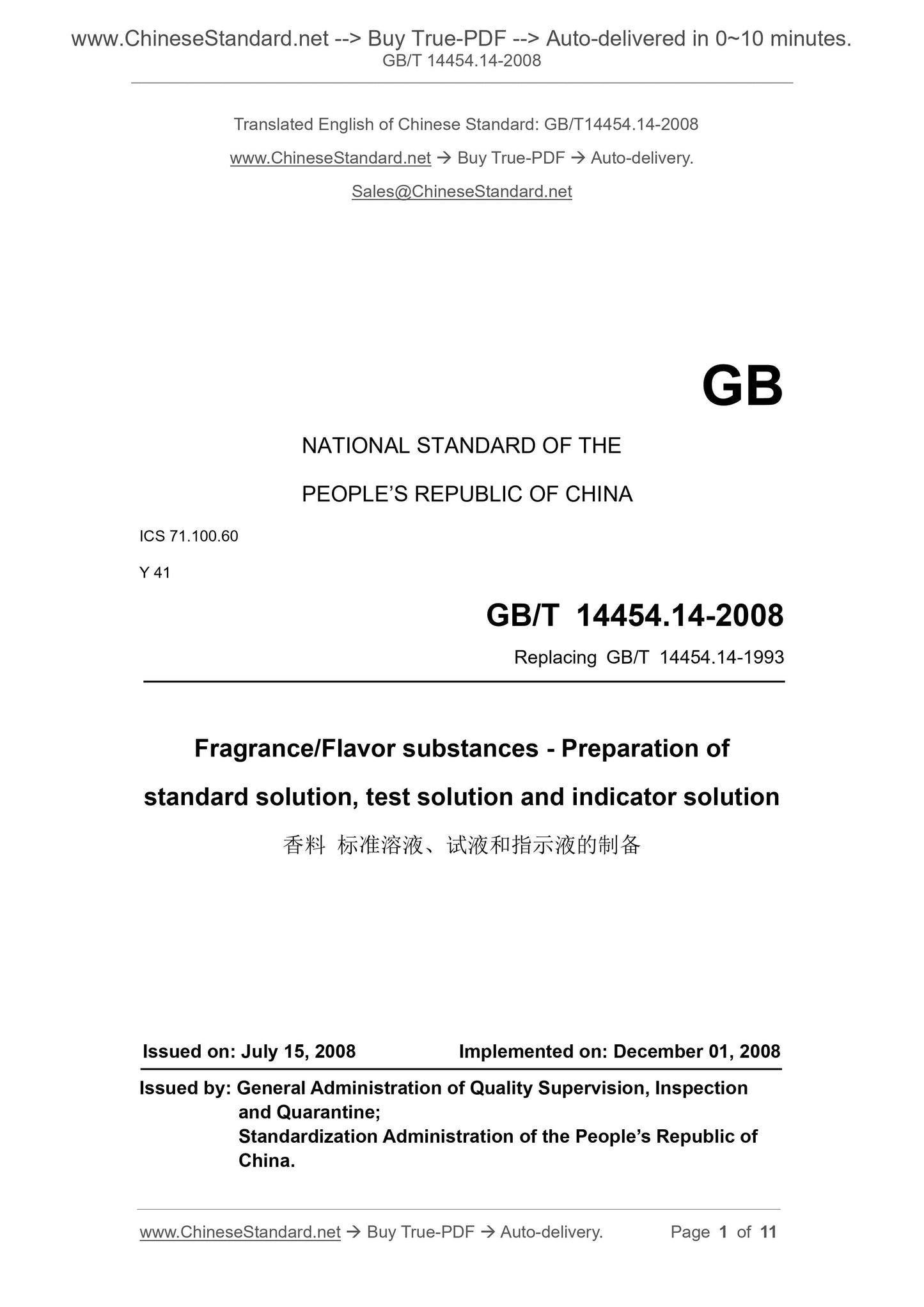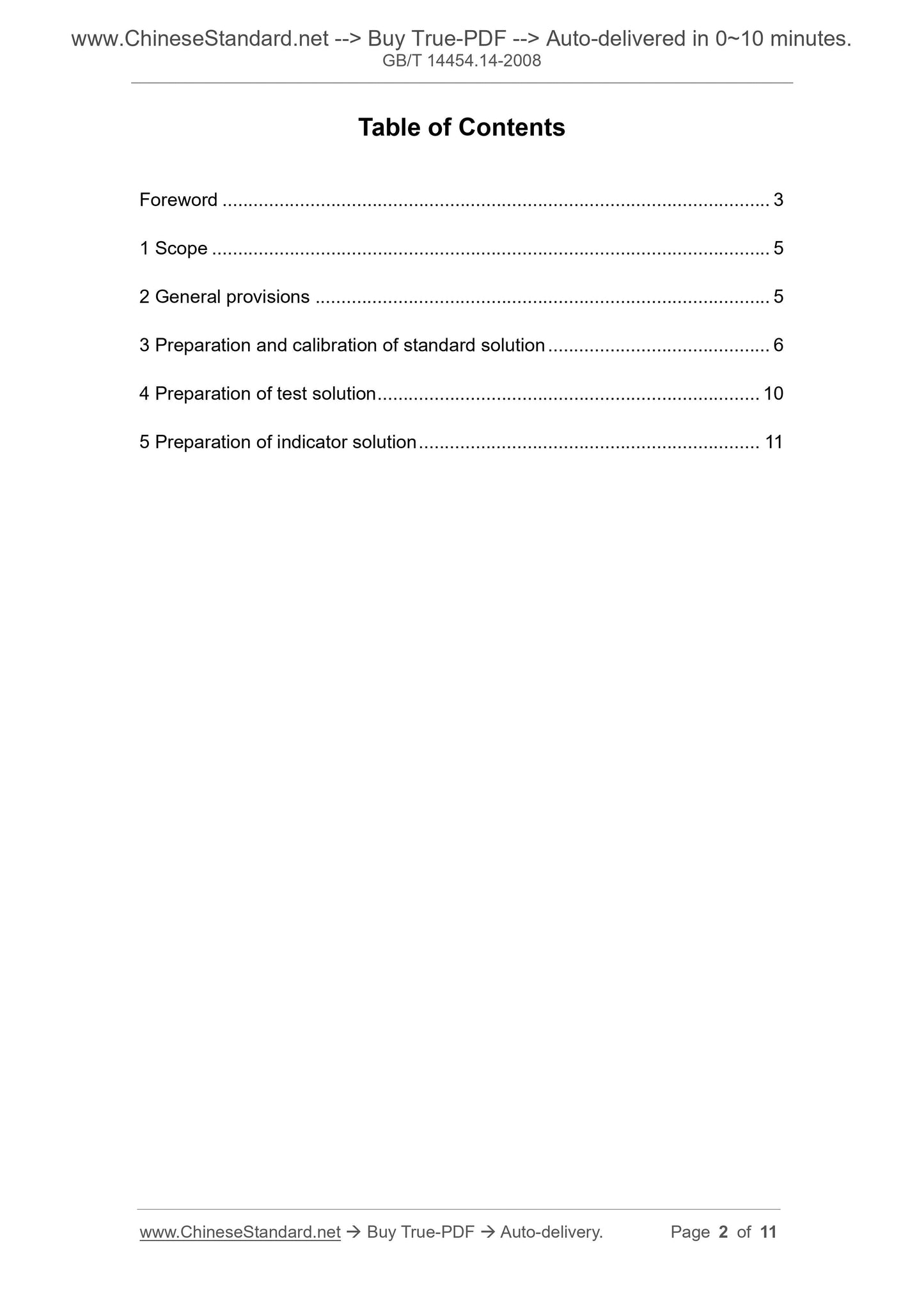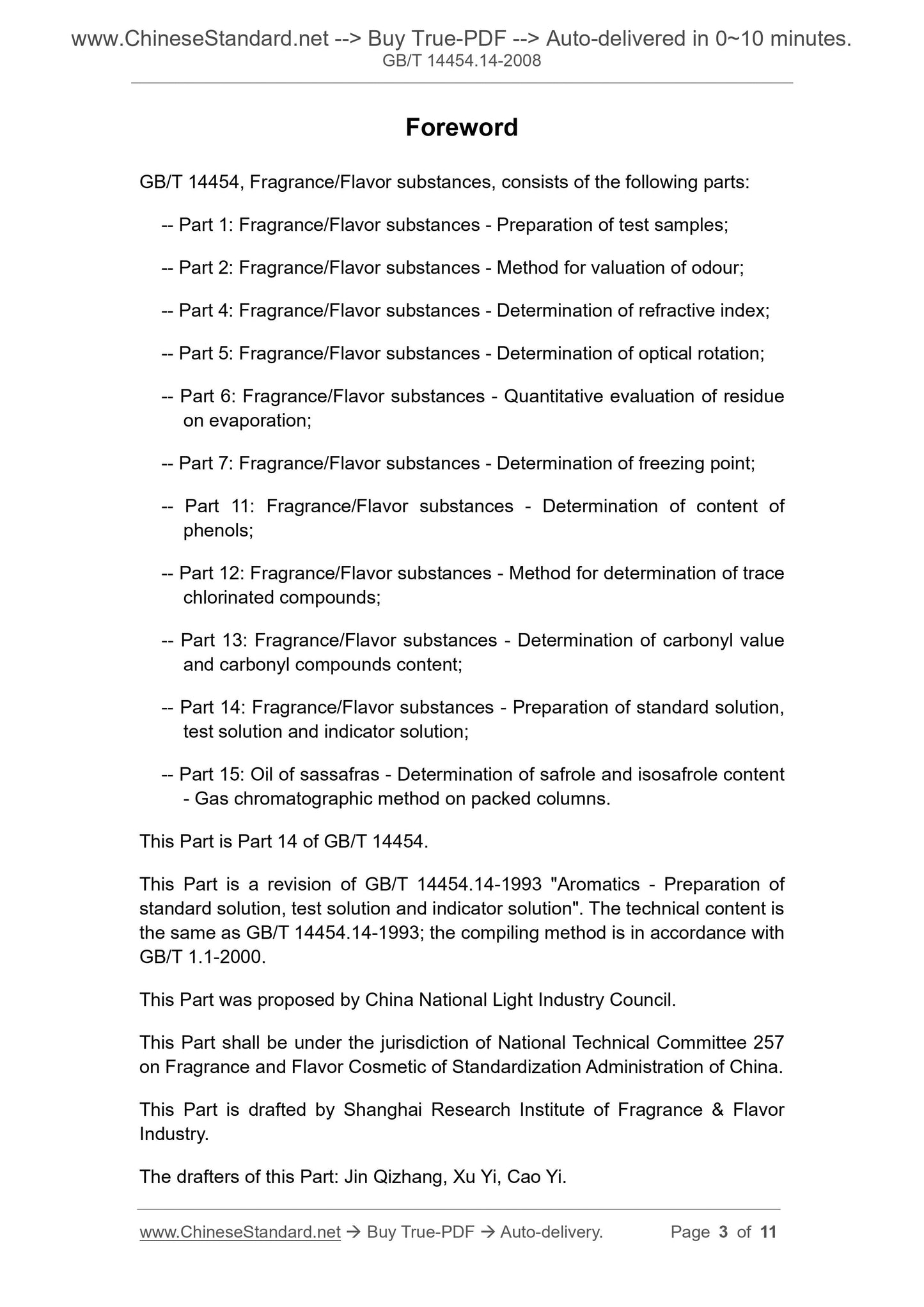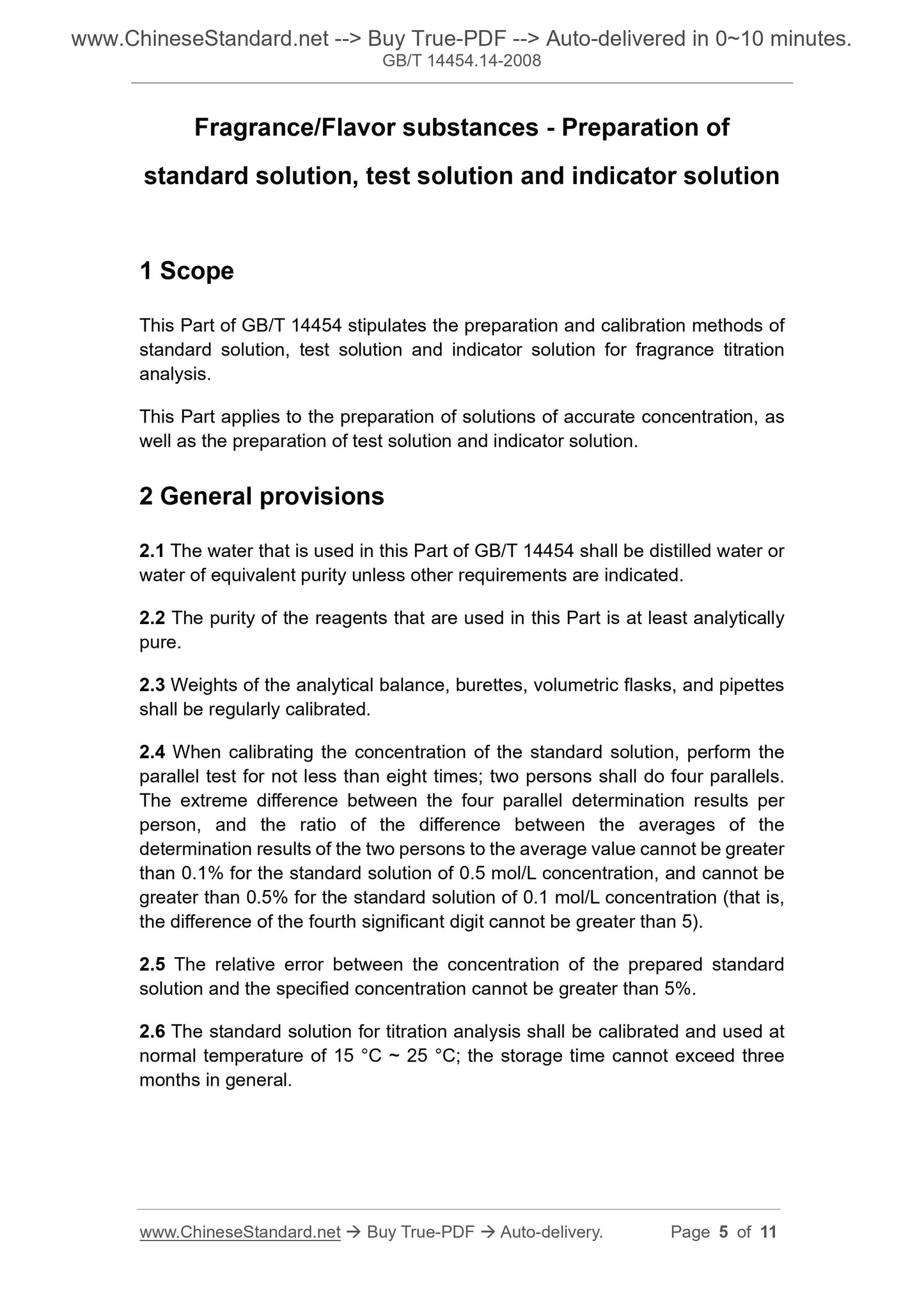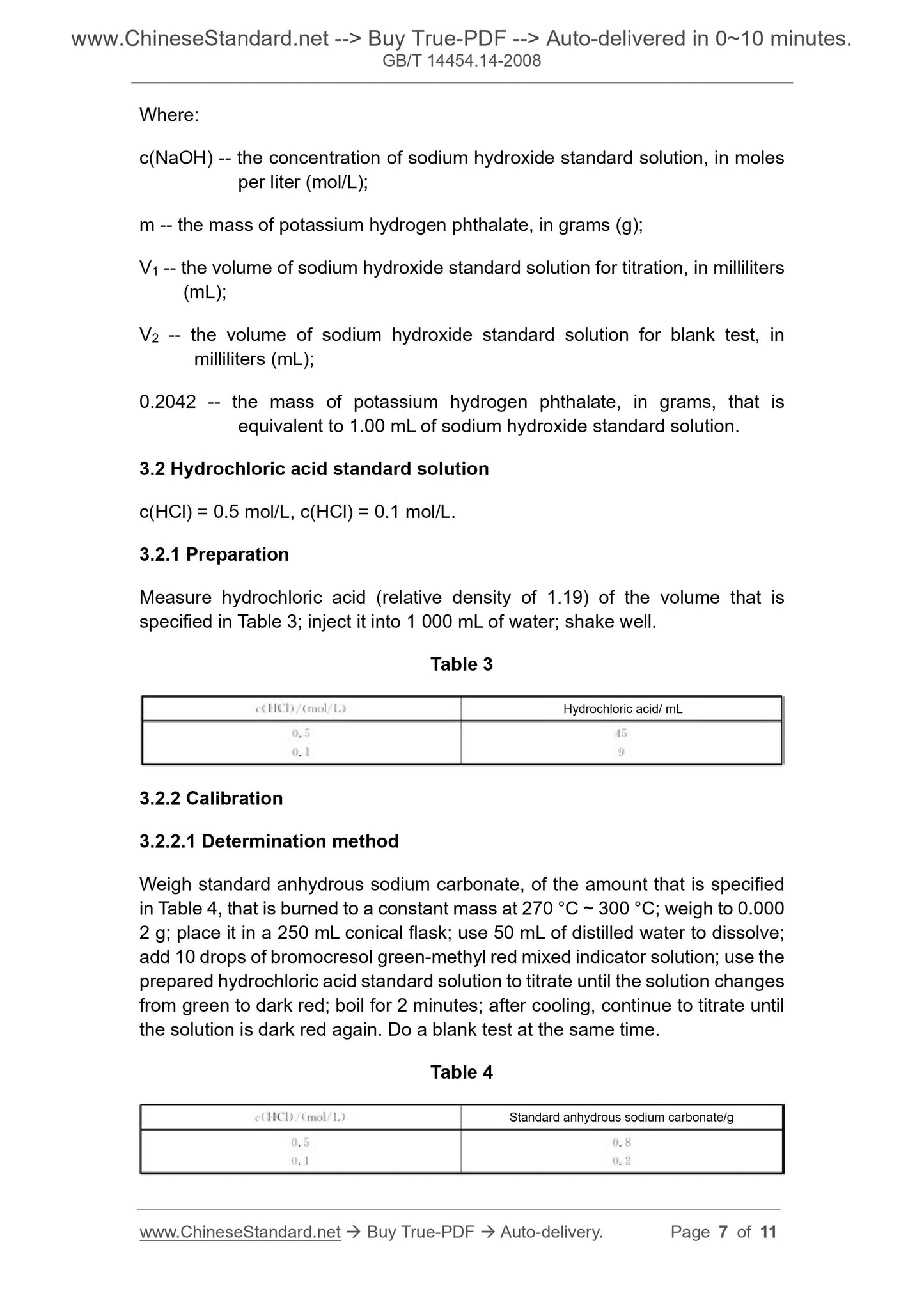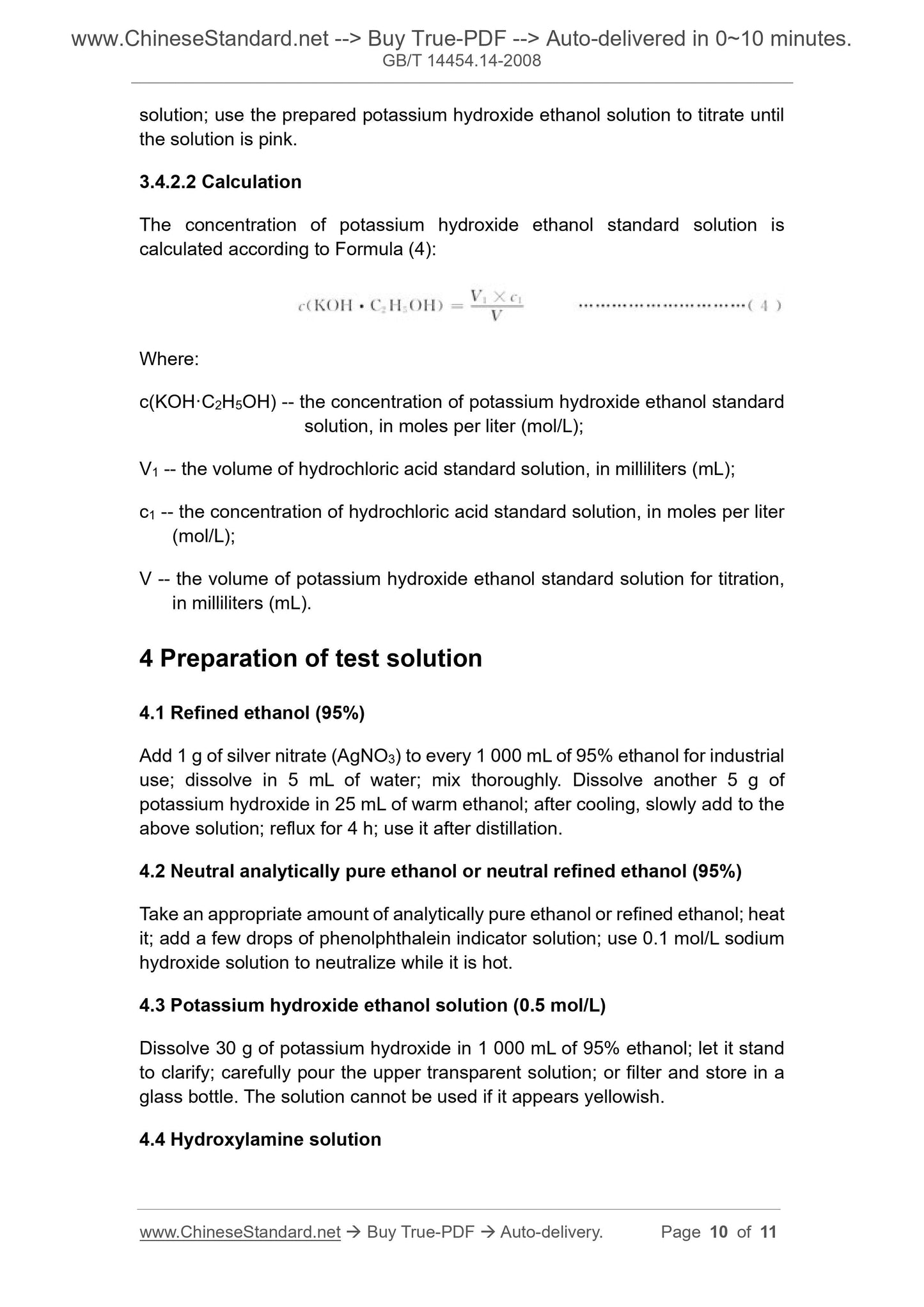1
/
of
6
www.ChineseStandard.us -- Field Test Asia Pte. Ltd.
GB/T 14454.14-2008 English PDF (GB/T14454.14-2008)
GB/T 14454.14-2008 English PDF (GB/T14454.14-2008)
Regular price
$110.00
Regular price
Sale price
$110.00
Unit price
/
per
Shipping calculated at checkout.
Couldn't load pickup availability
GB/T 14454.14-2008: Fragrance/Flavor substances - Preparation of standard solution, test solution and indicator solution
Delivery: 9 seconds. Download (and Email) true-PDF + Invoice.Get Quotation: Click GB/T 14454.14-2008 (Self-service in 1-minute)
Newer / historical versions: GB/T 14454.14-2008
Preview True-PDF
Scope
This Part of GB/T 14454 stipulates the preparation and calibration methods ofstandard solution, test solution and indicator solution for fragrance titration
analysis.
This Part applies to the preparation of solutions of accurate concentration, as
well as the preparation of test solution and indicator solution.
Basic Data
| Standard ID | GB/T 14454.14-2008 (GB/T14454.14-2008) |
| Description (Translated English) | Fragrance/Flavor substances - Preparation of standard solution, test solution and indicator solution |
| Sector / Industry | National Standard (Recommended) |
| Classification of Chinese Standard | Y41 |
| Classification of International Standard | 71.100.60 |
| Word Count Estimation | 7,785 |
| Date of Issue | 2008-07-15 |
| Date of Implementation | 2008-12-01 |
| Older Standard (superseded by this standard) | GB/T 14454.14-1993 |
| Regulation (derived from) | National Standard Approval Announcement 2008 No.12 (Total No.125) |
| Issuing agency(ies) | General Administration of Quality Supervision, Inspection and Quarantine of the People's Republic of China, Standardization Administration of the People's Republic of China |
| Summary | This standard specifies the use of spices titration analysis of standard solution, indicator solution and test solution preparation and calibration methods. This section applies to the preparation of the exact concentration of the solution in the preparation of test solution and instructions also apply to liquid. |
Share
